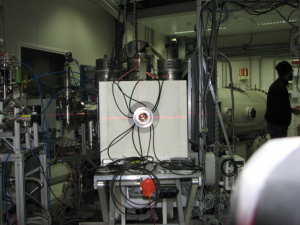
It is in the nature of astrophysics that many of the processes and objects one tries to understand are physically inaccessible. Thus, it is important that those aspects that can be studied in the laboratory be rather well understood. One such aspect are the nuclear fusion reactions, which are at the heart of nuclear astrophysics: they influence sensitively the nucleosynthesis of the elements in the earliest stages of the universe and in all the objects formed thereafter, and control the associated energy generation, neutrino luminosity, and evolution of stars. LUNA (Laboratory for Underground Nuclear Astrophysics; https://luna.lngs.infn.it/) is a new experimental approach for the study of nuclear fusion reactions based on an underground accelerator laboratory. Over the last 25 years the LUNA Collaboration has been directly measuring cross sections of the Hydrogen burning and Primordial nucleosynthesis reactions in the low-background underground laboratories of Laboratori Nazionali del Gran Sasso (LNGS). From 2019 a new 3.5 MV accelerator, capable to deliver extreme intense proton, alpha and carbon beams, will be installed at LNGS to explore the fascinating phases of stellar evolution in which helium and carbon are the main “fuel”. This is the moment when elements like oxygen and carbon are produced: in the final and somehow dramatic moment of the stellar evolution such elements are dispersed in the Universe and should be considered as the seeds of biological evolution.
People:
Staff: Paolo Prati e Sandra Zavatarelli
Post-doc: Francesca Cavanna e Federico Ferraro
Associati senior: Piero Corvisiero
